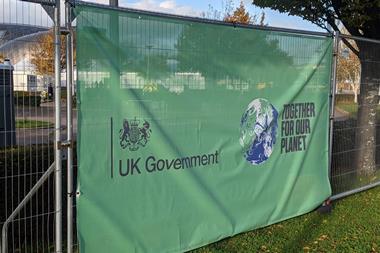Climate-aware investors should beware how methane-intensive businesses account for the greenhouse gas (GHG) given new research about the time horizons used to calculate a gas’s global warming potential (GWP), according to ISS ESG, the responsible investment arm of Institutional Shareholder Services.
In an “ESG Insight” article, the firm highlighted a study by researchers at Stanford University questioning whether the correct exchange rate is being applied to convert methane into a common currency of carbon accounting, carbon dioxide equivalents (CO2e).
“This is especially important when the data forms the basis for setting climate targets,” said Lukas Lohrer, climate analytics consultant, at ISS ESG and his colleague Ritika Iyer, climate analyst.
Methane has a much shorter lifespan than carbon dioxide – about 12 years, compared with a 300-1000 year lifetime of CO2 – but is more powerful during that lifetime. According to the International Energy Agency (IEA), rapid and sustained reducions in methane emissions are key to limiting near-term global warming and improving air quality.
In their article, the ISS ESG analysts said that, according to the Stanford study, calculating the GWP of a gas over 100 years – the most commonly-used time horizon – “is strongly at odds with the time horizons aligning with the 1.5°C global warming goal of the Paris Agreement (24 years), meaning methane’s GWP may be underestimated by as much as 63%”.
They said that most corporates that disclose a breakdown of GHG emissions use the framework provided by the GHG Protocol, which recognises the uncertainties inherent with GWP, but nevertheless in 2013 recommended it be calculated over a time horizon of 100 years.
The 100-year time horizon and the respective GWP was not necessarily a problem per se, said Lohrer and Iyer, but did “provide an opportunity for methane-intensive businesses to report favourably low GHG emissions, expressed in CO2-equivalents”.
“And if the Stanford scientists are correct, then any GHG reduction target based on such GHG numbers may not be in line with the scientific climate scenarios that chart a pathway to limit global warming to 1.5°C.”
For corporates and investors, this left them with two options, according to the ISS ESG analysts:
- setting separate targets for the reduction of methane emissions, as recently suggested by researchers at Cranfield University and in the Science-based Targets Initiative’s guidance for the oil & gas industry; or
- aligning the time horizon of the GWP with the time horizon of the scenario under which targets are set.
“Either way, the discussion highlights the need for more and better-quality corporate climate disclosure explicitly reporting emissions from separate GHGs and the GWPs applied,” wrote Lohrer and Iyer.
IEA highlights ‘massive underreporting’
Global methane emissions from the energy sector are about 70% greater than the amount officially reported by the governments, according to new the International Energ Agency (IEA) analysis released last month.
The 2022 update of the IEA’s global methane tracker provides, for the first time, a complete set of country-level estimates for methane emisions from the energy sector.
Methane emissions from the energy sector grew by just under 5% in 2021, which did not bring them back to their 2019 levels and slightly lagged the rise in overall energy use, “indicating that some efforts to limit emissions may already be paying off”, the IEA said.
The energy sector accounts for around 40% of methane emissions from human activity, with metthane responsible for around 30% of the rise in global temperatures since the Industrial Revolution.
The release of the IEA’s updated tracker comes after more than 100 countries made a ‘Global Methane Pledge’ at COP26 in Glasgow in November. The pledge is to reduce methane emissions from human activities, including agriculture, by 30% by 2030.
“At today’s elevated natural gas prices, nearly all of the methane emissions from oil and gas operations worldwide could be avoided at no net cost,” said IEA executive director Fatih Birol.
“The IEA has been a longstanding champion of stronger action to cut methane emissions. A vital part of those efforts is transparency on the size and location of the emissions, which is why the massive underreporting revealed by our Global Methane Tracker is so alarming.”
Read the digital edition of IPE’s latest magazine

















No comments yet